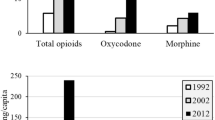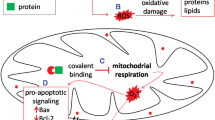Summary
On the basis of the data currently available, the wild type cytochrome P450 2C19 (CYP2C19) gene appears to be absent in 2 to 6% of Caucasian populations and up to 20% of Asian populations. A poor metaboliser phenotype therefore results. The CYP2C19 phenotype can be determined clinically by use of either mephenytoin or omeprazole as the probe. Since both drugs are metabolised primarily by CYP2C19 in human liver microsomes, they are both useful, competitive inhibitors of CYP2C19 activity available to researchers working in vitro. The 2 known mutant alleles of CYP2C19 do not result in the expression of active enzyme and can be tested by using small samples of whole blood. No rapid mutants have been identified. A number of drugs have been shown to inhibit CYP2C19 in vivo, including fluvoxamine and fluoxetine. Important drug interactions may result from inhibition of hepatic CYP2C19 activity in extensive metabolisers or from the interaction of CYP2C19 substrates with other pathways in poor metabolisers.
Similar content being viewed by others
References
Wrighton SA, Stevens JC, Becker GW, et al. Isolation and characterization of human liver cytochrome P450 2C19: correlation between 2C19 and S-mephenytoin 4′-hydroxylation. Archiv Biochem Biophys 1993; 306(1): 240–5
De Morais SM, Wilkinson GR, Blaisdell J, et al. The major genetic defect responsible for the polymorphism of S-mephenytoin metabolism in humans. J Biol Chem 1994; 269: 19–22
De Morais SM, Wilkinson GR, Blaisdell J, et al. Identification of a new genetic defect responsible for the polymorphism of (S)-mephenytoin metabolism in Japanese. Mol Pharmacol 1994; 46: 594–8
Küpfer A, Preisig R. Pharmacogenetics of mephenytoin: a new drug hydroxylation polymorphism in man. Eur J Clin Pharmacol 1984; 26: 753–9
Wedlund PJ, Aslanian WS, McAllister CB, et al. Mephenytoin hydroxylation deficiency in Caucasians: frequency of a new oxidative drug metabolism polymorphism. Clin Pharmacol Ther 1984; 36: 773–80
Wedlund PJ, Sweetman BJ, Wilkinson GR, et al. Pharmacogenetic association between the formation of 4-hydroxymephenytoin and a new metabolite of S-mephenytoin in man. Drug Metab Dispos 1987; 15: 277–9
Wedlund PJ, Sweetman BJ, McAllister CB, et al. Direct enantiomeric resolution of mephenytoin and its N-demethylated metabolite in plasma and blood using chiral capillary gas chromatography. J Chromatogr 1984; 307: 121–7
Zhang Y, Blouin RA, McNamara PJ, et al. Limitation to the use of the urinary S/R mephenytoin ratio in pharmacogenetic studies. Br J Clin Pharmacol 1991; 31: 350–2
Tybring G, Bertillson L. A methodological investigation on the stimation of the S-mephenytoin hydroxylation phenotype using the urinary S/R ratio. Pharmacogenetics 1992; 2: 241–3
Balian J, Soukhova N, Hewett J, et al. Omeprazole as a probe for the S-mephenytoin polymorphism. Clin Pharmacol Ther 1995; 57: 662–9
Andersson T, Regårdh CG, Dahl-Puustinen ML, et al. Slow omeprazole metabolizers are also poor S-mephenytoin hydroxylators. Ther Drug Monit 1990; 12: 415–6
Doshi BS, Kulkarni RD, Chauhan BL, et al. Frequency of impaired mephenytoin 4′-hydroxylation in an Indian population. Br J Clin Pharmacol 1990; 30: 779–80
Jurima M, Inaba T, Kadar D, et al. Genetic polymorphism of mephenytoin p(4′)-hydroxylation: difference between Orientals and Caucasians. Br J Clin Pharmacol 1985; 19: 483–7
Nakamura K, Goto F, Ray WA, et al. Interethnic differences in genetic polymorphism of debrisoquin and mephenytoin hydroxylation between Japanese and Caucasian populations. Clin Pharmacol Ther 1985; 38: 402
Bertilsson L, Lou Y-Q, Du Y-L, et al. Pronounced differences between native Chinese and Swedish populations in the polymorphic hydroxylations of debrisoquin and S-mephenytoin. Clin Pharmacol Ther 1992; 51: 388–97
Weerasuriya K, Jayakody RL, Smith CAD, et al. Debrisoquine and mephenytoin oxidation in Sinhalese: a population study. Br J Clin Pharmacol 1994; 38: 466–70
Sohn D-R, Kusaka M, Ishizaki T, et al. Incidence of S-mephenytoin hydroxylation deficiency in a Korean population and the interphenotypic differences in diazepam pharmacokinetics. Clin Pharmacol Ther 1992; 52: 160–9
Clasen K, Madsen L, Brøsen K, et al. Sparteine and mephenytoin oxidation: genetic polymorphisms in East and West Greenland. Clin Pharmacol Ther 1991; 49: 624–31
Jacqz E, Dulac H, Mathieu H. Phenotyping polymorphic drug metabolism in the French Caucasian population. Eur J Clin Pharmacol 1988; 35: 167–71
Hadidi H, Irshaid YM, Woosley RL, et al. S-mephenytoin hydroxylation phenotypes in a Jordanian population. Clin Pharmacol Ther 1995. In press
Pollock BG, Perel JM, Kirshner JM, et al. S-mephenytoin hydroxylation in older Americans. Eur J Pharmacol 1991; 40: 609–11
Guttendorf RJ, Britto M, Blouin RA, et al. Rapid screening for polymorphisms in dextromethorphan and mephenytoin metabolism. Br J Clin Pharmacol 1990; 29: 373–80
Sanz EJ, Villén T, Alm C, et al. S-mephenytoin hydroxylation phenotypes in a Swedish population determined after co-administration with debrisoquine. Clin Pharmacol Ther 1989; 45: 495–9
Drøhse A, Bathum L, Brøsen K, et al. Mephenytoin and sparteine oxidations: genetic polymorphisms in Denmark. Br J Clin Pharmacol 1989; 27: 620–5
Inaba T, Jurima M, Nakano M, et al. Mephenytoin and sparteine pharmacogenetics in Canadian Caucasians. Clin Pharmacol Ther 1984; 36: 670–6
Edeki TI, Hajiloo L, Butler M, et al. S-mephenytoin 4-hydroxylation in African Americans [abstract]. J Clin Pharmacol 1994; 34: 102
Andersson T, Regårdh C-G, Lou Y-C, et al. Polymorphic hydroxylation of S-mephenytoin and omeprazole metabolism in Caucasian and Chinese subjects. Pharmacogenetics 1992; 2: 25–31
Bertillson L, Henthorn TK, Sanz E, et al. Importance of genetic factors in the regulation of diazepam metabolism: relationship to S-mephenytoin, but not debrisoquine hydroxylation phenotype. Clin Pharmacol Ther 1989; 45: 348–55
Yasumori T, Nagata K, Yang SK, et al. Cytochrome P450-mediated metabolism of diazepam in human and rat: involvement of human CYP2C in Af-demethylation in the substrate concentration-dependent manner. Pharmacogenetics 1993; 3: 291–301
Andersson T, Cederberg C, Edvardsson G, et al. Effect of omeprazole treatment on diazepam plasma levels in slow versus normal rapid metabolizers of omeprazole. Clin Pharmacol Ther 1990; 47: 79–85
Jacqz E, Hall SD, Branch RA, et al. Polymorphic metabolism of mephenytoin in man: pharmacokinetic interaction with a co-regulated substrate, mephobarbital. Clin Pharmacol Ther 1986; 39: 646–53
Ward SA, Walle T, Walle UK, et al. Propranolol’s metabolism is determined by both mephenytoin and debrisoquin hydroxylase activities. Clin Pharmacol Ther 1989; 45: 72–9
Skjelbo E, Brøsen K, Hallas J, et al. The mephenytoin oxidation polymorphism is partially responsible for the N-demethylation of imipramine. Clin Pharmacol Ther 1991; 49: 18–23
Nielsen KK, Brøsen K, Hansin MGJ, et al. Single dose kinetics of clomipramine: relationship to the sparteine and S-mephenytoin oxidation polymorphisms. Clin Pharmacol Ther 1994; 55: 518–27
Breyer-Pfaff U, Pfandl B, Nill K, et al. Enantioselective amitriptyline metabolism in patients phenotyped for two cytochrome P450 isozymes. Clin Pharmacol Ther 1992; 52: 350–8
Rost KL, Roots I. Accelerated caffeine metabolism after omeprazole treatment is indicated by urinary metabolic ratios: coincidence with plasma clearance and breath test. Clin Pharmacol Ther 1994; 55: 402–11
Cavuto JN, Soukhova N, Hewett J, et al. Effect of omeprazole on theophylline clearance in poor metabolizers of omeprazole [abstract]. Clin Pharmacol Ther 1994; 57: 215
Gram LF, Guentert TW, Grange S, et al. Moclobemide, a substrate of CYP2C19 and an inhibitor of CYP2C19, CYP2D6 and CYP1A2: a panel study. Clin Pharmacol Ther 1995; 57: 676–7
Flockhart DA, Clauw DJ, Buchert Sale E, et al. Pharmacogenetic characteristics of the eosinophilia-myalgia syndrome. Clin Pharmacol Ther 1994; 56: 398–405
Gram LF. Drug therapy: fluoxetine. N Engl J Med 1994; 331: 1354–61
Brøsen K, Skjelbo E. Fluoxetine and norfluoxetine are potent inhibitors of P450IID6 — the source of the sparteine/debrisoquine oxidation polymorphism [letter]. Br J Clin Pharmacol 1991; 32: 136–7
Brøsen K, Skjelbo E, Rasmussen BB, et al. Fluvoxamine is a potent inhibitor of cytochrome P4501A2. Biochem Pharmacol 1993; 45: 1211–4
Perucca E, Gatti G, Cipolla G, et al. Inhibition of diazepam metabolism by fluvoxamine: a pharmacokinetic study in normal volunteers. Clin Pharmacol Ther 1994; 56: 471–6
Fleishaker JC, Hulst LK. Effect of fluvoxamine on the pharmacokinetics and pharmacodynamics of alprazolam in healthy volunteers [abstract]. Pharm Res 1992; 9: S292
Van Harten J, Holland RL, Wesnes K. Influence of multiple dose administration of fluvoxamine on the pharmacokinetics of the benzodiazepines lorazepam and bromazepam: a randomized crossover study [abstract]. Eur Neuropsychopharmacol 1992; 2: 381
Spina E, Pollicino AM, Avenoso A, et al. Fluvoxamine-induced alterations in plasma concentrations of imipramine and desipramine in depressed patients. Int J Clin Pharmacol Res 1993; 13: 167–71
Hartter S, Arand M, Oesch F, et al. Noncompetitive inhibition of clomipramine N-demethylation by fluvoxamine. Psychopharmacology 1995; 117: 149–53
Nielsen KK, Brøsen K, Hansen MG, et al. Single-dose kinetics of clomipramine: relationship to the sparteine and S-mephenytoin oxidation polymorphisms. Clin Pharmacol Ther 1994; 55: 518–27
Lemoine A, Gautier JC, Azoulay D, et al. The major pathway of imipramine metabolism is catalyzed by cytochromes P450 1A2 and 3A4 in human liver. Mol Pharmacol 1993; 43: 827–32
Andersson T, Miners JO, Veronese ME, et al. Identification of human liver cytochrome P450 isoforms mediating omeprazole metabolism. Br J Clin Pharmacol 1994; 37: 597–606
Miners JO, Veronese JO, Birkert JO. In vitro approaches for the prediction of human drug metabolism. Annu Rep Med Chem 1994; 29: 307–16
Author information
Authors and Affiliations
Rights and permissions
About this article
Cite this article
Flockhart, D.A. Drug Interactions and the Cytochrome P450 System. Clin. Pharmacokinet. 29 (Suppl 1), 45–52 (1995). https://doi.org/10.2165/00003088-199500291-00008
Published:
Issue Date:
DOI: https://doi.org/10.2165/00003088-199500291-00008




